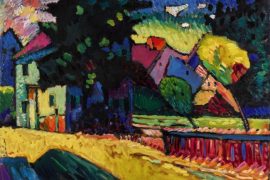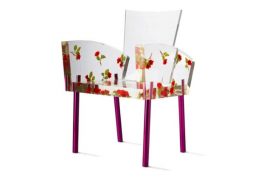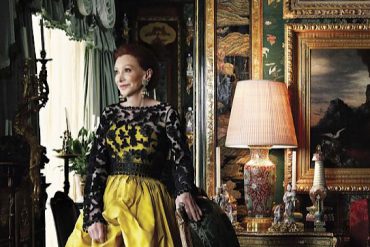The next edition of its Comic Strip sale (Sotheby’s): the first sale of 2017. On Saturday 21 January, comic strip amateurs can admire original pages by leading American and European cartoonists.
The event will be led by four Masters of Europe’s golden age of strip cartoons: Hergé, André Franquin, Uderzo and Edgar P. Jacobs. The sale will also include a magnificent selection of top-quality American pages, which collectors in Europe rarely get to see at auction. Artists include Alex Raymond and his legendary hero Flash Gordon, Charles Schulz with Peanuts and Robert Crumb accompanied by the distinctly naughty Fritz the Cat. Bernard Mahé from the Galerie 9e Art (Paris), and Eric Verhoest from the Galerie Champaka (Brussels) will be the expert consultants for this new event.
EUROPEAN CARTOONISTS Uderzo, Astérix: Le Devin (estimate: €140,000-180,000) The incontestable star of the sale is a masterpiece by Astérix’s cartoonist. Taken from the album Le Devin (Asterix the Soothsayer), this page was signed and presented by Uderzo to the assistant of his German publisher in 1975. Making its first appearance on the market, it reveals the artist’s genius in both the narrative divisions and the staging. His humour can also be seen in the panel where Dogmatix leaps up to hide in Obelix’s breeches, and in the next one, where the anger is palpable in the very movement of the air, the lettering and in the look of the speech balloon. Uderzo left nothing to chance! A rare detail: one of the panels is inspired from a Rembrandt picture The Anatomy Lesson in the last panel.
Franquin, Spirou & Fantasio: Les Petits Formats (estimate: €75,000-80,000)
This page was first published in Le Parisien Libéré and four years later, in Spirou. It belongs to the golden age of Spirou & Fantasio. At this period, the publisher Dupuis was trying to export its hero to France. The initial idea was to make use of a major newspaper, Le Parisien Libéré, to feature new adventures of Spirou & Fantasio independently of the ones published in the Spirou magazine. Franquin accepted the challenge. The adventure here, Les Petits Formats, takes place entirely in Champignac, and echoes the incredible success of the rubber cartoon characters in the late Fifties. The hero finds himself in the company of the legendary Marsupilami. This page is a remarkable example of Franquin’s art.
Hergé, La Palette du Peintre, colouring album cover, 1957, Chinese ink and white gouache, 40 x 31 cm (estimate: €120,000-150,000)
This splendid composition places the six main characters from the Adventures of Tintin on an artist’s palette. It consists of the original gouache for the cover of a large colouring album published in 1957. Here we see Tintin, Snowy, Captain Haddock, the Thompson Twins and Professor Calculus jubilantly emptying tubes of paint in a picture demonstrating Hergé’s exceptional talent as a publicity and poster artist. This illustration is also striking for its modernity: a reflection of his interest in painting.
E. P. JACOBS, Blake et Mortimer – Volume 8, S.O.S Météores, Page 2, Chinese ink on paper, published by Lombard – 1959 (estimate: €70,000-80,000)
This rare page shows Mortimer in rainy Paris surroundings, full of humorous details like the traffic jams in the Place de la Concorde. However, it is the attention and clarity of Jacobs’ drawing that reveal his admirable talent, particularly in the magnificent panoramic view of the station, and then in the train. Each incidental figure seems to have a real identity and character. The meticulous care lavished on the credibility of characters who play no role in the plot is a real achievement. We can also mention various sequences: series of two to five pages that are a highly particular feature of strip cartoon narrative. For example, collectors can discover pages 14 and 15 in Chinese ink from Volume 4 of Cargos du crépuscule from Maurice Tillieux’s series Gil Jourdan (estimate: €22,000-25,000), together with pages 35 to 39 from L’Arbre des deux printemps by Dany in watercolour ink and gouache (estimate: €9,000-11,000).
AMERICAN CARTOONISTS
Alex Raymond, Flash Gordon, Page of 4 July 1937, 41 x 51 cm (estimate: €42,000-46,000)
Here, Alex Raymond was at the peak of his art. This original page from Flash Gordon has a timeless, incredibly modern feel to it: a real tour de force due to the balanced composition, which makes skilful use of geometrical motifs. The crosshatching and shadow show effects that reflect a timeless beauty, reminiscent of Japanese prints.
Charles Schulz, Peanuts, Goo ol’ Charlie Brown, Sunday page of 10 February 1974, Chinese ink, 43 x 61 cm (estimate: €35,000-40,000)
Making play with the comic effect of repetition as well as with the incongruity between text and image through his extremely pure stylisation, the creator of Peanuts always make his readers laugh. He introduced a new take on humour by mingling the philosophical with the absurd, and made the comic strip a real visual art. In addition, the Sunday Pages, far rarer than the gags presented in a single strip, give added value to this admirable page.
Robert Crumb, Fritz the Cat, Fritz the No Good, 1968, Bollantine Books – 1968, page 13, Chinese ink on paper (estimate: €12,000-14,000)
The quality of this page from Fritz the No Good comes from the opposition between two inking techniques used by Robert Crumb. Firstly, the solid areas in undiluted Chinese ink give extraordinary intensity to the night sky; secondly, the crosshatchings laid edge to edge give substance to the settings. The urban architecture in the page is also worth pointing out. From the houses to the motorway slip roads and typically American bridges, Crumb’s pen provides an accurate depiction of his backgrounds.
Burne Hogarth, Tarzan, Sunday page – 25 April 1948, Chinese ink on paper (estimate: €12,000-15,000)
Strip cartoon collectors will be enchanted by this exceptional Sunday Page of Tarzan from 1948, showing Burne Hogarth’s beautifully refined inking and magnificent depictions of anatomy. Hogarth, who was a genius at inking, bases his drawing on both solid black areas and the precise anatomical details of his characters. Here Tarzan, adopting extremely protective gestures, embodies the archetype of wild virility. Meanwhile, the sensual Jane reflects the physical types in favour with Hollywood at the time. The entire series is based on the myth of the protective man and the woman dependent on his strength. This page thus illustrates a virtually historico-sociological image of America during the 1940s.





